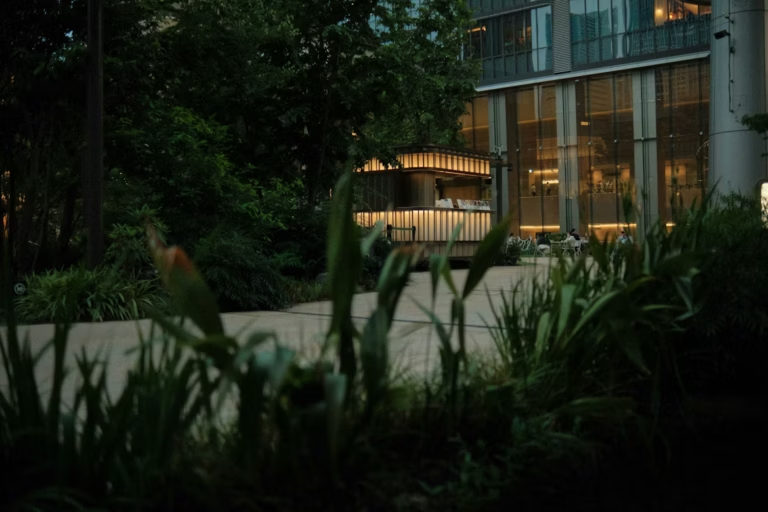Security and safety are vital concerns for any community or business, and preventing crime is often a priority. While traditional security methods focus on alarms, cameras, and physical barriers, there is another approach that integrates design principles into security strategies—this is known as CPTED crime prevention, or Crime Prevention Through Environmental Design.
At Smartsec Security Solutions, we specialise in helping businesses and communities implement CPTED strategies to reduce the likelihood of crime through thoughtful design and planning. This article explores the principles of CPTED crime prevention, its benefits, and how businesses can integrate CPTED into their security efforts.
What is CPTED?
CPTED, or Crime Prevention Through Environmental Design, is a multi-disciplinary approach to deterring criminal behaviour by influencing the physical environment. The core idea of CPTED is that the built environment—whether it’s a public park, office building, or retail space—can be designed in a way that naturally discourages criminal activity.
By making spaces more visible, harder to access for unauthorised individuals, and fostering a sense of ownership and care, CPTED crime prevention seeks to reduce opportunities for crime.
Rather than focusing on reactive measures like installing security cameras after a crime occurs, CPTED aims to proactively prevent crime by designing spaces that make criminal behaviour more difficult or risky. This approach can be applied to a variety of environments, including residential areas, businesses, schools, and public spaces.
The Core Principles of CPTED Crime Prevention
The CPTED crime prevention framework is built around four core principles that work together to reduce the likelihood of criminal activity. These principles can be applied to any space to enhance safety and security while improving the quality of the environment.
1. Natural Surveillance
Natural surveillance is the principle of designing spaces so that they are easily visible to others. By increasing visibility, the opportunity for criminal activities is reduced because perpetrators are more likely to be observed by passers-by, residents, or employees. This can be achieved through the strategic placement of windows, lighting, and clear sightlines in public areas.
For example, businesses can enhance natural surveillance by ensuring entrances, parking lots, and other vulnerable areas are well-lit and unobstructed by landscaping or large structures. Open spaces and transparent barriers also help provide clear views of an area, deterring potential criminals from acting under the assumption that no one is watching.
2. Natural Access Control
Natural access control refers to the strategic use of design elements to control who can enter or exit certain areas. By guiding people towards or away from specific locations, natural access control limits opportunities for unauthorised access and creates clear boundaries between public and private spaces. This can be accomplished through the use of gates, fences, pathways, and signage.
For businesses, natural access control can mean designing entryways and exits that funnel visitors through specific points, making it easier to monitor who is coming and going. This can also include using barriers or landscaping features to subtly direct traffic away from restricted areas, reducing the chance of unauthorised entry.
3. Territorial Reinforcement
Territorial reinforcement is the idea of using design elements to create a sense of ownership over a space. When people feel ownership over an area, they are more likely to maintain it and be vigilant about any suspicious activity. This principle can be applied by clearly delineating public and private spaces using fencing, signage, and landscaping, as well as encouraging community or employee involvement in maintaining the space.
For instance, a business might use distinct signage or decorative elements to reinforce the idea that certain areas are private or off-limits to unauthorised personnel. This not only discourages trespassing but also sends a clear message that the area is actively monitored and maintained.
4. Maintenance
The maintenance principle of CPTED crime prevention emphasises the importance of keeping spaces clean, well-maintained, and functional. A well-maintained environment signals that the space is cared for and regularly monitored, which can deter criminal activity. In contrast, neglected spaces with overgrown landscaping, broken lighting, or visible damage are more likely to attract vandals and other criminal behaviour.
For businesses, regular maintenance—such as fixing broken windows, repairing damaged fences, and ensuring adequate lighting—can go a long way in preventing crime. A clean, well-lit, and cared-for environment signals that the space is being watched and taken care of, which can reduce the likelihood of opportunistic crimes.
How Businesses Can Benefit from CPTED Crime Prevention
Implementing CPTED strategies offers several benefits for businesses and communities. These strategies not only enhance security but also create more inviting and functional spaces for employees, customers, and visitors. Here are a few key advantages of CPTED crime prevention:
1. Reducing Crime and Vandalism
One of the primary benefits of CPTED crime prevention is its ability to deter criminal activity before it happens. By designing spaces with crime prevention in mind, businesses can reduce the risk of theft, vandalism, and other types of property damage. This proactive approach also minimises the need for expensive reactive measures, such as repairs or heightened security after an incident.
2. Improving Perceived Safety
A space that feels safe encourages more positive interactions and attracts more people, whether it’s a retail environment, office building, or public park. CPTED can help create environments where employees, customers, and visitors feel safe, improving the overall perception of the space. This can lead to increased foot traffic, customer satisfaction, and a stronger sense of community.
3. Enhancing Property Value
Well-designed and maintained spaces are more desirable, which can increase property value and business appeal. By incorporating CPTED principles into the design of a building or property, businesses can create a more attractive environment that benefits everyone, from tenants and employees to customers and clients. This can also lead to greater retention of employees and customers who feel comfortable and secure in the space.
4. Promoting a Positive Environment
The principles of CPTED encourage not only the prevention of crime but also the creation of spaces that foster positive interactions. Whether in a business setting or a public area, CPTED crime prevention strategies promote a sense of community and care for the environment, encouraging people to take responsibility for their surroundings and work together to keep the area safe and inviting.
Considerations When Implementing CPTED Crime Prevention
While CPTED crime prevention offers many advantages, it’s essential to implement these strategies carefully and in a way that suits the specific needs of your business or community. Here are a few considerations when adopting CPTED principles:
1. Involving Security Experts
Implementing CPTED strategies effectively requires careful planning and consideration of various factors, such as the location, existing security measures, and business needs. Consulting with security experts who have experience in CPTED crime prevention ensures that the strategies are tailored to your environment and that they complement your current security systems.
2. Balancing Design with Functionality
While CPTED focuses on crime prevention, it’s essential to balance security with the functionality and aesthetic appeal of a space. The goal is to create environments that are both secure and inviting. For example, using natural landscaping elements like trees and shrubs can enhance the beauty of a space while simultaneously serving as barriers that direct traffic and control access.
3. Ensuring Compliance with Local Regulations
Before implementing CPTED strategies, it’s essential to ensure that any changes to the design or layout of a space comply with local building codes, zoning regulations, and safety standards. Security experts can help navigate these requirements, ensuring that all modifications meet legal standards.
How Smartsec Security Solutions Can Help
At Smartsec Security Solutions, we provide expert advice and consulting on CPTED crime prevention strategies to help businesses create safer environments. Our team works with you to assess your current security needs and design spaces that discourage crime through thoughtful planning and design.
Why Choose Smartsec Security Solutions?
- Independent Expertise: We offer unbiased advice based on your specific business needs, ensuring that your CPTED strategies are both effective and tailored to your environment.
- Tailored Solutions: Our CPTED strategies are designed to fit the unique security challenges of your space, helping to reduce crime while enhancing the usability of the area.
- Comprehensive Service: From risk assessments to design recommendations and ongoing support, we provide end-to-end guidance on implementing CPTED crime prevention strategies.
To learn more about how CPTED crime prevention can benefit your business or community, visit our services page or contact us for a consultation.
Conclusion
CPTED crime prevention offers a proactive approach to reducing crime through thoughtful design and environmental management. By applying principles such as natural surveillance, access control, and territorial reinforcement, businesses can create spaces that not only deter criminal activity but also foster a sense of community and safety.
At Smartsec Security Solutions, we are committed to helping businesses and communities implement effective CPTED strategies that reduce crime and enhance the overall quality of their environments. For more information or to schedule a consultation, visit our services page.



